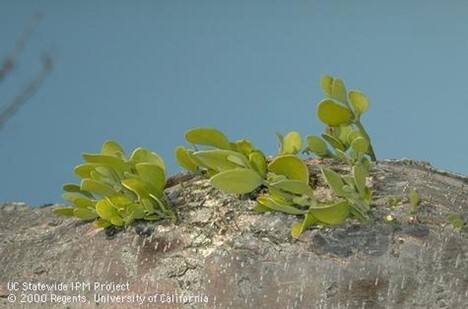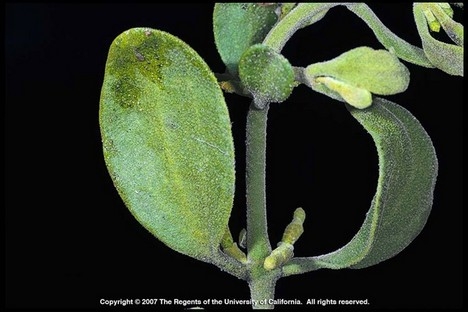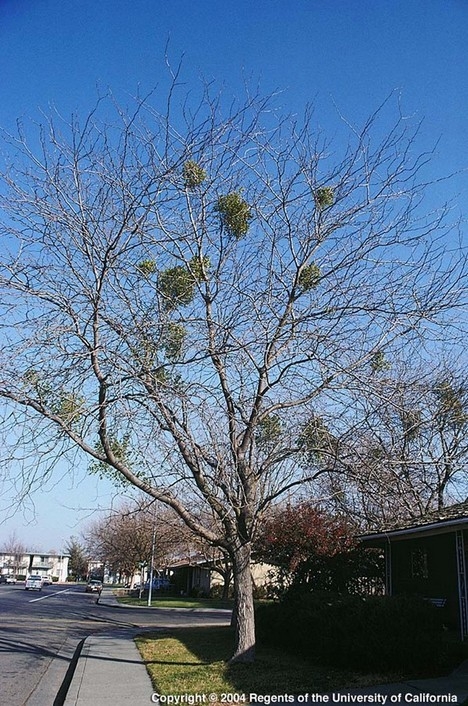- Author: Help Desk Team
Note: This was originally published in the Contra Costa Times.
Q: I have a lot of mistletoe in my street tree, which is some sort of ash, I think. Is it a problem and if so, how do I get rid of it?
A: Broadleaf mistletoe is an evergreen parasitic plant that grows on a number of landscape trees in California and can be readily observed on deciduous trees once the leaves have fallen. Modesto ash is especially susceptible to mistletoe infestations. As a parasite it absorbs both water and mineral nutrients from its host trees. Healthy trees can tolerate a few branch infections, but individual branches may be weakened or sometimes killed. Heavily infested trees may be reduced in vigor, stunted, or even killed, especially if they are stressed by other problems such as drought or disease.
The Mistletoe Lifecycle:
Mistletoe is either female (produce berries) or male (produce only pollen). The berries of the female are small, sticky, and whitish. Birds feed on and digest the pulp of the berries and excrete the living seeds which stick to any tree branch on which they land. After the seed germinates, it grows through the bark and into the tree's water- conducting tissues where rootlike structures called haustoria develop. These haustoria gradually extend up and down within the branch as the mistletoe grows, and for that reason if you simply remove the visible portion of the mistletoe, it will often resprout.
Controlling Mistletoe:
The most effective way to control mistletoe and prevent its spread is to prune out infested tree branches. Remove branches at their point of origin on the main trunk or back to a large lateral branch and cut at least one foot below the point of mistletoe attachment. Mistletoe infecting the trunk or a main branch where it cannot be pruned may be controlled by cutting off the mistletoe flush with the limb or trunk. You must then wrap the area with a few layers of black polyethylene to exclude light. Use twine or tape to secure the plastic to the limb, but do not wrap it too tightly or the branch may be damaged. Broadleaf mistletoe requires light and will die within a couple of years without it. It may be necessary to repeat this treatment.
Harvesting for the Holidays:
Simply cutting the mistletoe out of an infested tree each winter, even without wrapping, is better than doing nothing at all. Even though the parasite will grow back, spread is reduced because broadleaf mistletoe must be several years old before it can bloom and produce seed. Time your pruning right and you will have plenty of mistletoe for the holidays.
For More Information:
For more information on mistletoe and its management, the University of California has a free publication located at: https://ipm.ucanr.edu/PMG/PESTNOTES/pn7437.html
Help Desk of the UC Master Gardeners of Contra Costa County (EDC)




